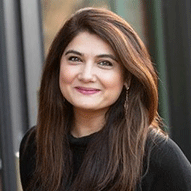Dallas
214-456-2768
Fax: 214-456-6898
At Children's Health℠, we offer the latest treatments to help children with dystonia live pain-free lives. With proper care and treatment, we can often keep symptoms from getting worse, and for many patients, we can return their movements to normal.
Dystonia causes twisting, painful muscle contractions (the feeling that muscles are getting tight). The muscle or muscle groups have a tough time relaxing once the contractions start.
Abnormal brain signals trigger these muscles to stiffen and twist painfully. Dystonia causes the body to uncomfortably contort in response to voluntary movements, such as walking, resting, writing or talking. When muscles can’t relax, it leads to cramping. The condition can range from mild to severe.
There are two main types of dystonia:
Primary dystonia is a genetic (inherited) disorder that occurs without a known brain injury.
Secondary dystonia is the most common form in children and is a result of a brain injury, like cerebral palsy or stroke.
Dystonia happens when muscles that should normally trade off (push-then-pull) activate at the same time. Dystonia can affect one or more areas of the body. The most common areas affected are the feet and legs, hands, and tongue. Other areas include:
Dystonia is usually triggered by a specific voluntary movement, such as writing, walking or speaking. Children with dystonia may feel that their body part is pulling in an abnormal direction or stuck in an abnormal position.
Dystonia is diagnosed by a physical exam with one of our pediatric dystonia experts. During the exam, your child’s doctor will try to trigger the symptoms of dystonia by challenging them with several movement tasks. Blood tests and MRIs (magnetic resonance imaging tests, which take detailed images of your child’s organs and tissues) can support the diagnosis, but the physical exam is key.
Dystonia can be caused by:
We offer a variety of treatment options for dystonia. Your child’s treatment will depend on which type of dystonia they have. You and your doctor will talk about which options are right for your child. Treatments include:





Dystonia in children often starts in one body area and spreads over months or years to involve other body areas. Some childhood dystonias affect only one body area, but most affect multiple body areas.
Dystonia does not affect very young children, but can start in toddlers. More often, dystonia begins closer to elementary school age. While some cases of dystonia are inherited, children are not born having dystonia. Children whose brains are injured later in life (for example, by a head trauma) can develop dystonia after their injury.